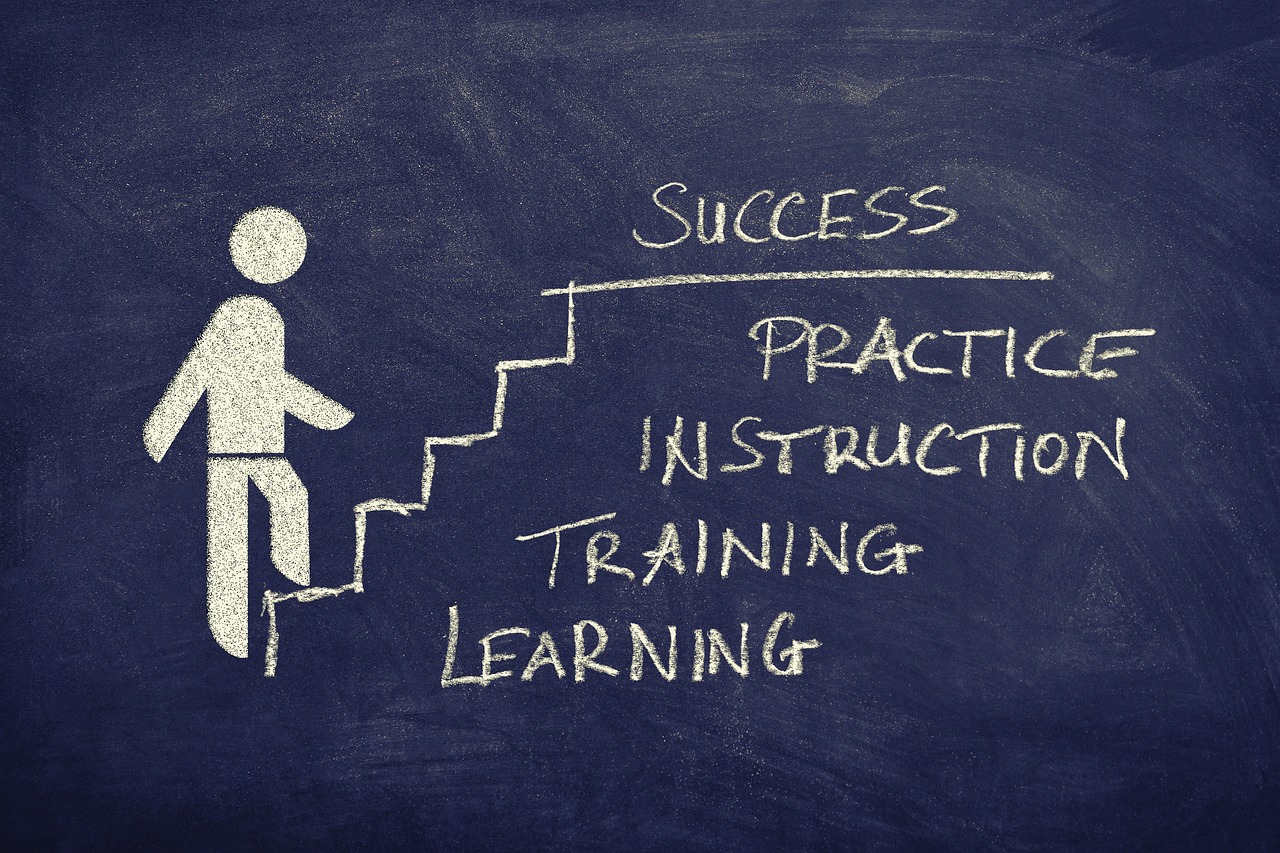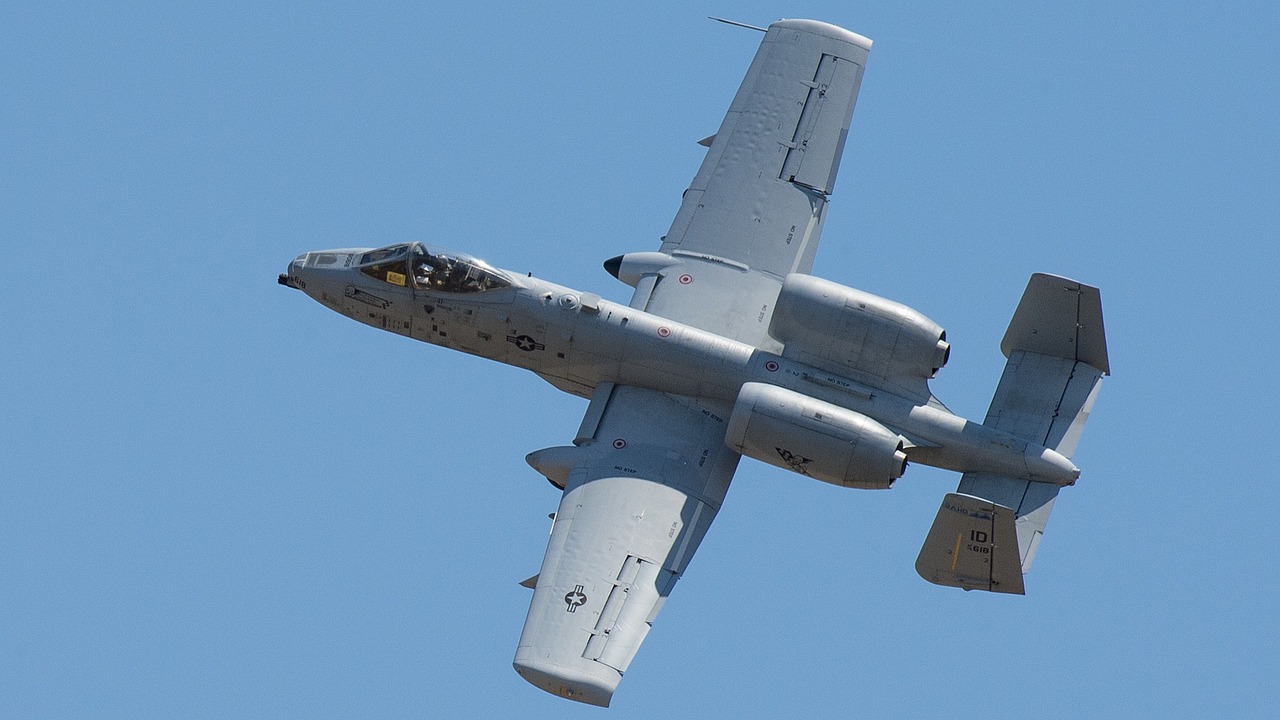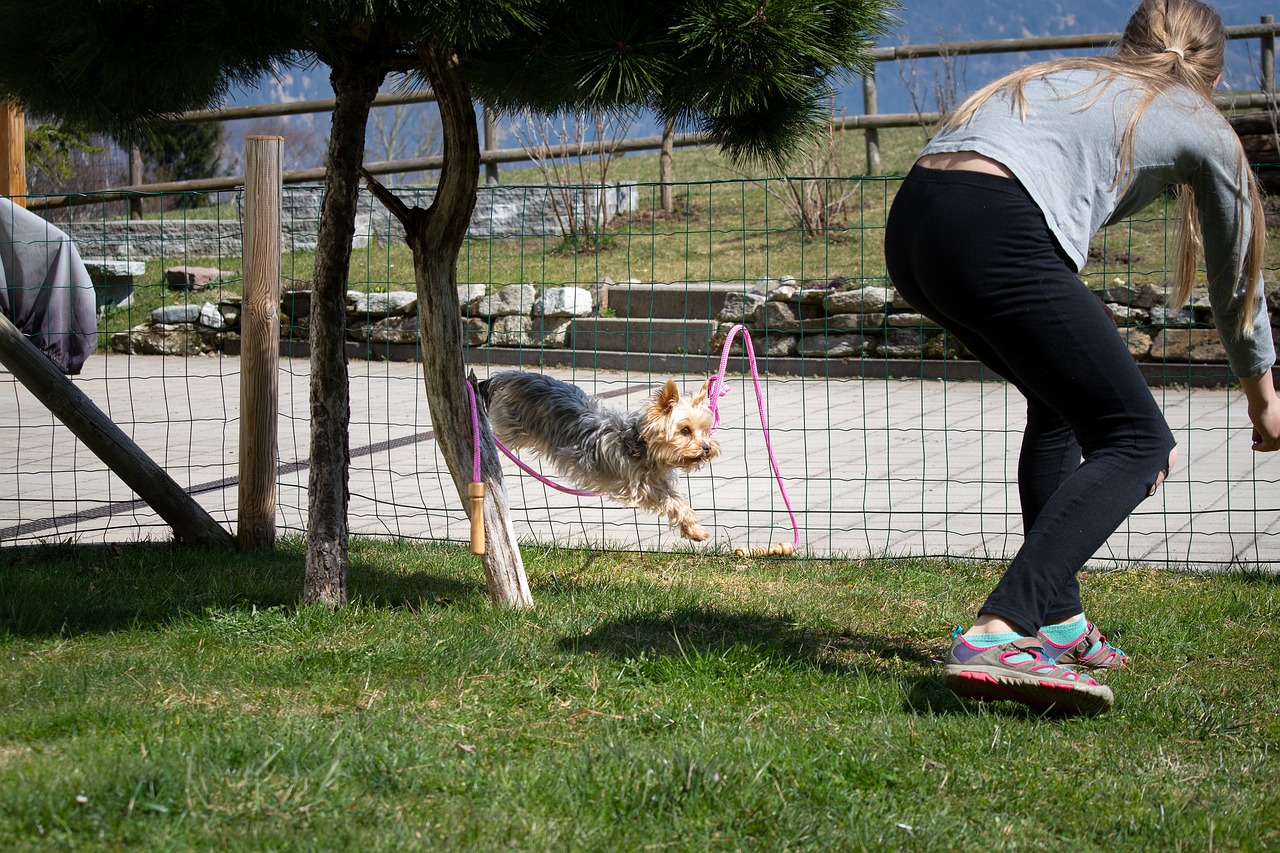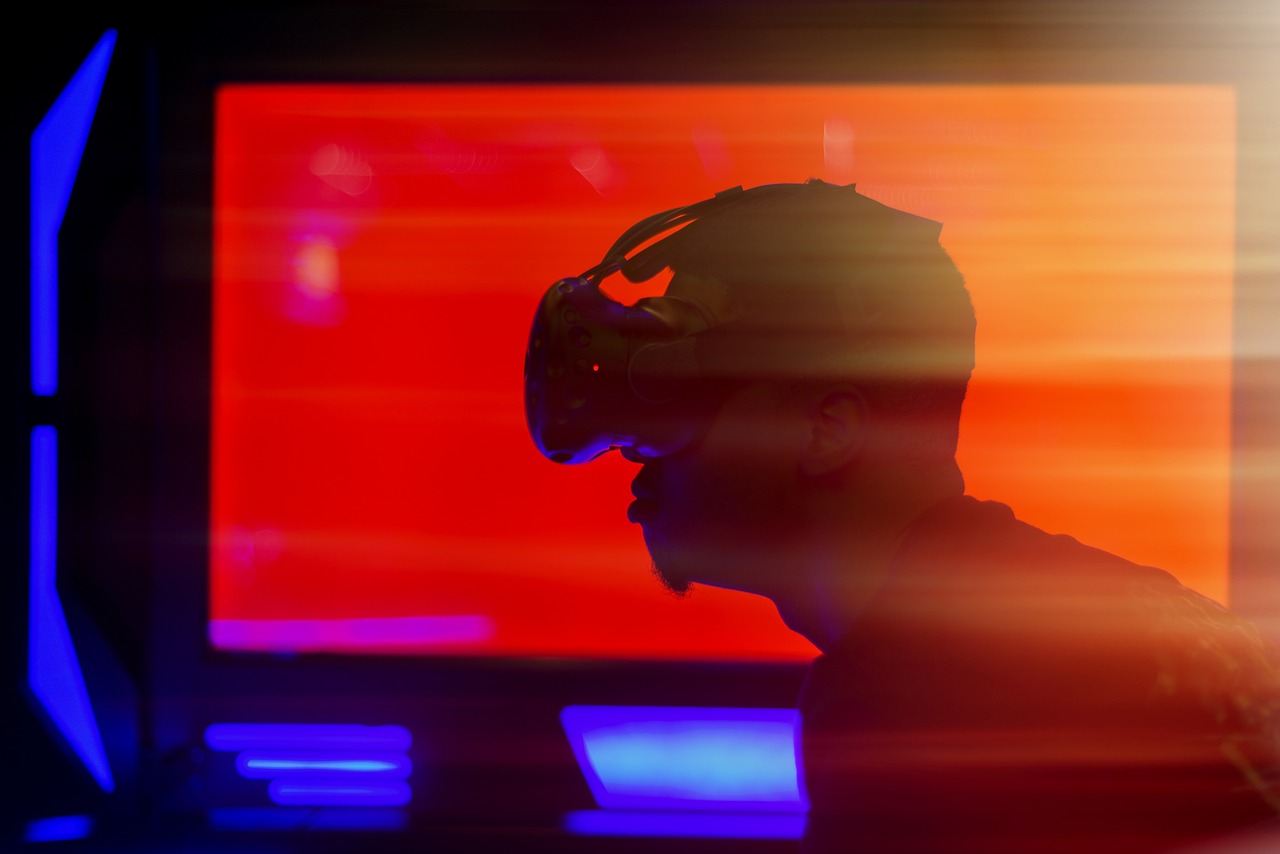The Impact of VR on Training for Non-Lethal Weapons Operations
In an age where technology is rapidly evolving, virtual reality (VR) has emerged as a game-changer in various fields, including training for non-lethal weapons operations. Imagine stepping into a digital world where you can practice your skills in a safe yet realistic environment. This immersive technology not only enhances the training experience but also prepares operators for real-world scenarios without the associated risks. As we delve deeper into this topic, we will uncover the transformative effects of VR on training programs, exploring how it enhances realism, effectiveness, and safety in operational scenarios.
Non-lethal weapons are designed with a crucial purpose: to incapacitate individuals while minimizing the risk of permanent harm. These weapons serve as an essential tool for law enforcement and military personnel, especially in situations where lethal force is not warranted. The types of non-lethal weapons vary widely, including options like stun guns, tear gas, and rubber bullets, each designed to control or deter without causing lasting damage. However, the effectiveness of these tools largely hinges on the operators' training. Proper training ensures that personnel can make quick, informed decisions under pressure, ultimately saving lives and maintaining order. As such, the integration of VR technology into training programs is not just beneficial; it is becoming increasingly essential.
Virtual reality provides a unique platform for immersive training experiences, allowing trainees to engage in simulated real-world scenarios that closely mimic the complexities they might face in the field. Picture this: a trainee dons a VR headset and suddenly finds themselves in a bustling urban environment, where they must assess a situation and decide the best course of action using non-lethal means. This kind of training enhances learning retention and situational awareness, as operators can practice their responses in a controlled yet realistic setting. By immersing trainees in various scenarios, VR helps them develop critical skills that are often difficult to replicate in traditional training environments.
One of the standout advantages of using VR for training is its ability to create immersive environments that engage trainees on multiple levels. When individuals are placed in realistic scenarios, they are more likely to experience heightened emotional responses, which can lead to improved decision-making skills during high-pressure situations. Imagine facing a potential threat where you must decide whether to use a non-lethal weapon. The anxiety that comes with such decisions can be overwhelming, but with VR training, operators can practice repeatedly until they feel confident and prepared. This psychological advantage not only builds confidence but also reduces anxiety, enabling operators to perform effectively when it truly matters.
VR technology excels in creating a diverse range of operational scenarios, which is critical for effective training. The ability to simulate everything from peaceful protests to hostile encounters allows trainees to practice their responses to various situations. This diversity is paramount; it ensures that operators are not only familiar with the tools at their disposal but also with the myriad of contexts in which they may need to use them. By experiencing different scenarios, trainees can develop a nuanced understanding of how to apply non-lethal weapons effectively and ethically.
Another significant benefit of VR training systems is their capacity to provide immediate feedback on performance. After completing a training scenario, operators can receive detailed assessments of their actions, highlighting areas for improvement. This feedback loop facilitates self-assessment and continuous improvement, allowing trainees to refine their skills over time. Imagine being able to review your decision-making process in a high-stress situation and learning exactly what you could have done differently. This level of insight is invaluable and contributes to more effective training outcomes.
Implementing VR training can lead to significant cost savings for organizations. Traditional training methods often require physical resources, live exercises, and extensive logistical planning. In contrast, VR training minimizes these needs, allowing organizations to allocate resources more efficiently. By reducing the frequency of live exercises and the associated costs of physical materials, organizations can invest in high-quality VR technology that offers a superior training experience. The economic benefits are clear, making VR an attractive option for those looking to enhance their training programs.
Despite its numerous advantages, VR training is not without challenges. Technological limitations can hinder the effectiveness of VR training programs, and integrating VR into existing training frameworks can be complex. Addressing these challenges is crucial for maximizing the benefits of VR in non-lethal weapons training.
The effectiveness of VR training can be impacted by hardware limitations and software compatibility issues. Not all organizations have access to the latest VR technology, which can create disparities in training quality. Additionally, ensuring that VR systems are compatible with existing training programs can be a significant hurdle. As technology continues to advance, overcoming these barriers will be essential for the widespread adoption of VR training in non-lethal weapons operations.
Combining VR training with traditional methods can also pose challenges. While VR offers numerous benefits, it cannot entirely replace the hands-on experience that traditional training provides. Developing strategies for effectively integrating VR into existing training frameworks is vital. This might involve creating hybrid training programs that leverage the strengths of both VR and traditional methods, ensuring that operators receive a well-rounded education in non-lethal weapons operations.
- What are non-lethal weapons? Non-lethal weapons are tools designed to incapacitate individuals without causing lasting harm.
- How does VR enhance training for non-lethal weapons? VR provides immersive scenarios that improve decision-making and situational awareness.
- Are there any challenges to using VR in training? Yes, challenges include technological limitations and the need for integration with traditional training methods.

Understanding Non-Lethal Weapons
Non-lethal weapons are a fascinating and crucial aspect of modern law enforcement and military operations. Designed with the primary goal of incapacitating individuals without inflicting permanent harm, these weapons provide a unique solution to various confrontational scenarios. Imagine a world where conflicts can be resolved without the devastating consequences of traditional firearms—this is the promise of non-lethal technology. These weapons serve to control situations with minimal injury, making them invaluable in crowd control, hostage situations, and other high-stakes encounters.
There are several types of non-lethal weapons, each tailored for specific operational needs. Some of the most common include:
- Rubber Bullets: Designed to incapacitate rather than kill, these projectiles can cause significant pain but are less likely to result in permanent injury.
- Tasers: These devices deliver an electric shock to temporarily incapacitate a person, allowing law enforcement to subdue individuals without resorting to lethal force.
- Chemical Agents: Such as tear gas or pepper spray, these are used to disperse crowds or incapacitate individuals by causing temporary discomfort.
- Acoustic Devices: These emit loud noises to disorient or deter individuals, providing a non-physical means of control.
The importance of effective training in the deployment of non-lethal weapons cannot be overstated. Operators must be well-versed in the proper use of these tools to ensure they are deployed effectively and safely. Training programs tailored to these weapons not only focus on technical skills but also emphasize the psychological aspects of engagement. For instance, understanding the potential reactions of individuals in high-stress situations is crucial. It's about equipping the operator with the knowledge to assess situations accurately and respond appropriately—after all, the wrong decision in the heat of the moment can lead to unintended consequences.
Moreover, the effectiveness of non-lethal weapons is heavily reliant on the operator's situational awareness and decision-making skills. This is where innovative training methods, such as virtual reality (VR), come into play. By simulating real-world scenarios, VR enhances the training experience, allowing operators to practice their skills in a safe environment. This immersive approach not only boosts confidence but also prepares them for the unpredictability of real-life situations. In essence, understanding non-lethal weapons is not just about knowing how to use them; it’s about mastering the art of engagement with a focus on preserving life while maintaining safety and order.

The Role of VR in Training
Virtual reality (VR) is revolutionizing the way training is conducted, particularly in the realm of non-lethal weapons operations. Imagine stepping into a digital world where you can face realistic scenarios without any of the risks associated with traditional training methods. With VR, trainees can engage in lifelike simulations that not only enhance their skills but also prepare them for real-world situations in a safe environment. This immersive technology allows operators to practice their responses to various threats, making them more effective in high-pressure scenarios.
One of the standout features of VR training is its ability to improve learning retention. Traditional training methods often rely on passive learning, where individuals absorb information without actively engaging with it. In contrast, VR immerses trainees in interactive environments, compelling them to make decisions and react in real-time. This hands-on approach not only makes the training experience more memorable but also reinforces the knowledge and skills necessary for successful operations.
Moreover, VR enhances situational awareness, which is crucial for operators of non-lethal weapons. In a simulated environment, trainees can practice recognizing and responding to various stimuli, such as crowd dynamics or potential threats. This heightened awareness translates to better performance during actual deployments, as operators become adept at assessing situations quickly and efficiently. The ability to train in a variety of scenarios—ranging from peaceful protests to high-stakes confrontations—ensures that trainees are well-prepared for any situation they might encounter.
Another significant advantage of VR training is its capacity for psychological preparation. High-pressure situations can lead to anxiety and decision fatigue, which may impair an operator's performance. By repeatedly exposing trainees to realistic scenarios in a controlled setting, VR helps them build confidence and reduce stress. This psychological advantage is akin to athletes practicing under pressure; the more they experience high-stakes conditions, the better they perform when it truly matters.
In addition to these benefits, VR training systems are equipped with advanced analytics that provide immediate feedback on performance. After each simulation, trainees can review their decisions and actions, identifying areas for improvement. This feedback loop is invaluable, as it fosters a culture of continuous learning and self-assessment. By understanding their strengths and weaknesses, operators can refine their skills and become more effective in their roles.
To summarize, the role of VR in training for non-lethal weapons operations is transformative. It offers immersive experiences that enhance learning retention, situational awareness, and psychological preparedness while providing immediate feedback for continuous improvement. As we continue to explore the potential of VR technology, it becomes increasingly clear that it is a game-changer in training methodologies.
- What are non-lethal weapons?
Non-lethal weapons are designed to incapacitate individuals without causing permanent harm. They are often used in law enforcement and military operations to control situations without resorting to lethal force. - How does VR improve training outcomes?
VR enhances training by providing immersive and interactive experiences that improve learning retention, situational awareness, and decision-making skills in high-pressure situations. - Are there any drawbacks to VR training?
While VR training offers numerous benefits, it also faces challenges such as technological limitations and the need for proper integration with traditional training methods. - Can VR training replace traditional training methods?
VR training is not intended to replace traditional training entirely; rather, it serves as a complementary tool that enhances and diversifies the training experience.

Benefits of Immersive Training
When it comes to training for non-lethal weapons, the benefits of immersive training through virtual reality (VR) are nothing short of revolutionary. Imagine stepping into a hyper-realistic environment where you can practice your skills without the fear of real-world consequences. This immersive experience not only enhances learning retention but also boosts situational awareness for operators. It’s like being in a video game, but with a purpose—training for real-life scenarios that require quick thinking and precise actions.
One of the most significant advantages of VR training is its ability to simulate high-pressure situations. In traditional training environments, the stress of real-life encounters can be overwhelming. However, with VR, trainees can face these challenges in a controlled setting, allowing them to develop their decision-making skills without the emotional burden. This practice is akin to a pilot using a flight simulator; they can experience turbulence and emergency landings without ever leaving the ground.
Moreover, immersive training allows for a diverse range of scenarios to be created, which is crucial for preparing trainees for the unpredictability of real-world operations. For instance, scenarios can vary from crowd control situations to hostage rescues, each requiring different tactics and responses. The ability to experience and react to various situations in a safe environment fosters adaptability, which is essential for anyone operating non-lethal weapons.
In addition to situational diversity, VR training offers immediate feedback and assessment. After each scenario, trainees can review their performance, identifying areas for improvement. This feedback loop is invaluable, as it enables individuals to refine their skills continuously. Think of it as having a personal coach who provides insights after every practice session, guiding you towards mastery. The psychological benefits of this training approach cannot be overstated; trainees often report feeling more confident and less anxious when faced with real-life challenges after undergoing immersive training.
In summary, the benefits of immersive training in VR are profound. By simulating realistic scenarios, enhancing decision-making skills, and providing immediate feedback, VR training equips operators with the tools they need to succeed in high-stakes environments. It’s not just about training; it’s about transforming the way we prepare for the complexities of non-lethal weapons operations.
- What are non-lethal weapons? Non-lethal weapons are designed to incapacitate individuals without causing permanent harm, often used in law enforcement and military operations.
- How does VR enhance training? VR enhances training by providing immersive experiences that simulate real-world scenarios, improving learning retention and situational awareness.
- What types of feedback can trainees expect from VR training? Trainees can expect immediate feedback on their performance, helping them identify strengths and areas for improvement.
- Are there any challenges to implementing VR training? Yes, challenges include technological barriers and the need for integration with traditional training methods.

Realistic Scenario Simulations
In the realm of training for non-lethal weapons operations, are not just a luxury; they are a necessity. Imagine stepping into a virtual world where every sound, sight, and sensation is meticulously crafted to mimic a real-life situation. This is the power of virtual reality (VR) training. It allows trainees to engage in scenarios that are as close to reality as possible, providing a safe environment to practice their skills without the risk of causing harm.
One of the most significant advantages of VR is the ability to create a wide variety of scenarios that can be tailored to specific training needs. For instance, a trainee could find themselves in a crowded public space, where they must assess a situation involving a potential threat. The immersive nature of VR means that they’ll hear the chatter of bystanders, see the anxious faces around them, and feel the pressure of making quick decisions. This level of immersion is crucial because it prepares operators for the unpredictability of real-world situations.
Moreover, VR training can simulate various environmental conditions, such as low-light situations, adverse weather, or even high-stress incidents. This diversity in training scenarios is essential because it enhances adaptability. Just like a seasoned chef can whip up a meal with whatever ingredients are available, a well-trained operator can respond effectively, regardless of the circumstances they face. The more varied the training, the better prepared they will be for the unexpected.
To illustrate the impact of realistic scenario simulations, consider the following table that outlines different training scenarios and their corresponding skills being developed:
| Scenario | Skills Developed |
|---|---|
| Crowded Event | Situational Awareness, De-escalation Techniques |
| Nighttime Operations | Navigation, Threat Identification |
| Weather Challenges | Adaptability, Decision-Making Under Pressure |
| Hostage Situation | Negotiation, Crisis Management |
Furthermore, the psychological aspect of training cannot be overlooked. Engaging in realistic scenarios through VR helps reduce anxiety and builds confidence. Trainees can practice repeatedly in a safe setting, making mistakes and learning from them without the dire consequences that would occur in a real-life situation. It’s like a rehearsal for a play; the more you practice your lines, the more confident you become on opening night.
In essence, realistic scenario simulations through VR are revolutionizing the way non-lethal weapons training is conducted. They provide an unparalleled opportunity for operators to hone their skills, make mistakes, learn, and ultimately become more effective in their roles. The future of training is not just about learning; it’s about experiencing, adapting, and thriving in a world where the stakes are high.
- What are non-lethal weapons? Non-lethal weapons are designed to incapacitate individuals without causing permanent harm, often used in law enforcement and military operations.
- How does VR enhance training for non-lethal weapons? VR provides immersive simulations that improve decision-making, situational awareness, and reduce anxiety in high-pressure environments.
- What types of scenarios can be simulated in VR training? Scenarios can range from crowded public events to nighttime operations and hostage situations, allowing for diverse training experiences.
- Are there any limitations to VR training? Yes, challenges include technological barriers and the need for effective integration with traditional training methods.

Feedback and Assessment
When it comes to training for non-lethal weapons operations, the importance of feedback cannot be overstated. In traditional training environments, feedback often comes after the fact, which can diminish its effectiveness. However, with virtual reality (VR)
One of the standout features of VR training systems is their ability to provide detailed performance analytics. After completing a training session, operators can review their actions, decisions, and even their emotional responses. This data-driven approach allows trainees to identify their strengths and weaknesses, creating a personalized roadmap for improvement. For example, a trainee might discover that they excel in de-escalation techniques but struggle with situational awareness. This insight can guide their future training sessions, ensuring that they focus on areas that need development.
The feedback mechanism in VR training can be categorized into several key components:
- Instantaneous Feedback: Trainees receive immediate responses to their actions, helping them adjust their strategies in real-time.
- Performance Metrics: Detailed analytics track various aspects of a trainee's performance, from decision-making speed to accuracy in executing techniques.
- Self-Assessment Tools: Trainees can engage in self-reflection, using the data provided to evaluate their own progress.
Moreover, the immersive nature of VR allows for a unique form of emotional feedback. Trainees can experience the psychological effects of their decisions in a safe environment, which is crucial for non-lethal weapons operations where the stakes are high. For instance, they might feel the pressure of a simulated crowd or the tension of a critical incident, which can lead to a deeper understanding of their emotional responses and how to manage them. This is vital in preparing them for real-life scenarios where maintaining composure is key.
In essence, the feedback and assessment capabilities of VR training not only enhance the learning experience but also ensure that trainees are better prepared for the challenges they will face in the field. By leveraging technology to provide immediate, actionable insights, VR training creates a more effective and engaging learning environment. This ultimately leads to a more competent and confident operator, ready to handle the complexities of non-lethal weapons operations.

Cost-Effectiveness of VR Training
When it comes to training for non-lethal weapons operations, the cost-effectiveness of virtual reality (VR) training is a game changer. Traditional training methods often require significant investments in physical resources, personnel, and facilities. However, with VR, organizations can drastically reduce these costs while still delivering high-quality training experiences. Imagine being able to train countless operators in various scenarios without the need for extensive equipment or live-fire exercises. This not only saves money but also enhances safety for both trainees and instructors.
One of the most notable financial benefits of VR training is the reduction in material costs. Traditional training often necessitates the use of real equipment and ammunition, which can quickly add up. In contrast, VR training eliminates the need for physical resources. This allows organizations to allocate their budgets more efficiently, focusing funds on other critical areas such as technology upgrades or personnel development. Additionally, the wear and tear on equipment is minimized, extending the lifespan of valuable resources.
Moreover, VR training significantly reduces the need for travel expenses. In many traditional training setups, personnel must travel to specific locations, which incurs costs related to transportation, accommodation, and meals. With VR, training can be conducted at any location equipped with the necessary technology. This flexibility not only cuts costs but also saves valuable time, allowing operators to train more frequently and effectively.
Another important aspect is the scalability of VR training programs. Organizations can easily expand their training initiatives without the constraints that come with physical setups. For instance, a single VR training module can be accessed by multiple users simultaneously, facilitating group training sessions or individual practice without the need for additional resources. This scalability ensures that as the demand for training increases, organizations can adapt without incurring significant additional costs.
To illustrate the potential savings, consider the following
| Training Method | Cost per Trainee | Annual Training Capacity | Total Annual Cost |
|---|---|---|---|
| Traditional Training | $5,000 | 100 | $500,000 |
| VR Training | $1,500 | 500 | $750,000 |
As shown in the table, while the total annual cost for VR training is higher, the ability to train a significantly larger number of trainees at a lower cost per person makes VR training a more efficient option in the long run. This is particularly crucial for organizations that need to maintain a high level of readiness while managing tight budgets.
In conclusion, the cost-effectiveness of VR training for non-lethal weapons operations cannot be overstated. By reducing material costs, minimizing travel expenses, and offering scalability, VR training presents a compelling case for organizations looking to enhance their training programs while managing costs effectively. As the technology continues to evolve, we can expect even greater efficiencies and improvements in training outcomes.

Challenges and Limitations
While the integration of virtual reality (VR) into training for non-lethal weapons operations offers numerous advantages, it is not without its challenges and limitations. One of the primary hurdles is the technological barriers that can impede the effectiveness of VR training. For instance, hardware limitations, such as inadequate processing power or outdated equipment, can lead to a less immersive experience. Imagine trying to enjoy a high-definition movie on an old, grainy TV; the experience is simply not the same. Similarly, if VR systems are not up to par, the training will fall short of its potential.
Moreover, software compatibility can pose significant issues. Different VR systems may not work seamlessly with existing training programs, leading to frustrating experiences for trainers and trainees alike. This lack of compatibility can result in inconsistent training experiences, which can ultimately hinder the learning process. It’s crucial for organizations to evaluate the technology they are using to ensure that it meets the demands of effective training.
Another challenge is the integration with traditional training methods. Many institutions have established training programs that rely heavily on conventional methods. Transitioning to a VR-based approach can be complex and requires careful planning. It's akin to trying to mix oil and water; without the right techniques, you may end up with a messy situation. Organizations must devise strategies to blend VR training with existing frameworks, ensuring that both methods complement each other rather than compete.
To tackle these challenges, organizations can consider the following approaches:
- Regularly Update Hardware: Investing in the latest technology can significantly enhance the training experience.
- Software Customization: Working with developers to create tailored solutions can ensure compatibility with existing systems.
- Training Integration Workshops: Conducting workshops for trainers can help them understand how to effectively incorporate VR into their programs.
Finally, it’s important to recognize that while VR training can simulate many aspects of real-world scenarios, it may not fully replicate the unpredictability of live environments. This limitation means that while VR training is invaluable, it should be viewed as a complement to, rather than a replacement for, traditional training methods. In essence, VR serves as a powerful tool in the training arsenal, but it should be used thoughtfully to maximize its benefits.
Q1: What are the primary benefits of using VR in non-lethal weapons training?
A1: VR enhances realism, improves decision-making skills, and allows for safe practice in high-pressure scenarios.
Q2: What technological challenges are commonly faced in VR training?
A2: Common challenges include hardware limitations, software compatibility issues, and the need for regular updates.
Q3: How can organizations effectively integrate VR with traditional training methods?
A3: Organizations can conduct workshops, customize software solutions, and regularly update their hardware to ensure a seamless integration.
Q4: Is VR training sufficient on its own?
A4: While VR training provides many benefits, it should complement traditional training methods rather than replace them entirely.

Technological Barriers
When it comes to leveraging virtual reality (VR) for training in non-lethal weapons operations, the excitement is palpable. However, the path to fully integrating this innovative technology is not without its challenges. One of the primary hurdles is the that can hinder the effectiveness of VR training programs. Imagine preparing for a high-stakes scenario, only to find that the equipment doesn't function as expected. This is a reality that many organizations face.
First and foremost, hardware limitations can significantly impact the training experience. VR systems require high-performance computers and specialized headsets that can be quite expensive. For many organizations, especially those with limited budgets, investing in the latest technology can seem daunting. Furthermore, as technology evolves rapidly, maintaining and upgrading hardware to keep pace with advancements can be a logistical nightmare.
Additionally, software compatibility presents another challenge. Not all VR training programs are created equal, and integrating new software with existing systems can be complicated. Imagine trying to fit a square peg into a round hole—it simply doesn't work! Organizations often find themselves grappling with issues like outdated software or lack of support for newer platforms, which can lead to frustration and wasted resources.
Moreover, to truly harness the power of VR, organizations need to invest time and effort into training their personnel on how to use these systems effectively. This requires not just technical knowledge, but also an understanding of how to incorporate VR into existing training methodologies. Without proper training, even the most advanced VR systems can become underutilized or misused, leading to suboptimal training outcomes.
To illustrate these points, consider the following table that summarizes the key technological barriers faced by organizations looking to implement VR training:
| Barrier | Description |
|---|---|
| Hardware Limitations | High costs and maintenance requirements for advanced VR equipment. |
| Software Compatibility | Challenges in integrating new VR software with existing systems. |
| Personnel Training | Need for comprehensive training to ensure effective use of VR systems. |
Despite these challenges, it’s essential not to lose sight of the potential that VR holds for enhancing training programs. By addressing these technological barriers head-on, organizations can pave the way for a more effective and immersive training experience. Collaboration with technology providers, investing in ongoing training, and staying updated with the latest advancements can help mitigate these issues.
In conclusion, while the road to implementing VR training for non-lethal weapons operations may be fraught with challenges, the benefits far outweigh the obstacles. By recognizing and addressing these technological barriers, organizations can unlock a new realm of training possibilities that not only enhance learning but also significantly improve operational readiness.
- What are non-lethal weapons? Non-lethal weapons are designed to incapacitate individuals without causing permanent harm.
- How does VR improve training? VR provides immersive experiences that enhance learning retention and situational awareness.
- What are the costs associated with VR training? While initial costs can be high, VR training can lead to long-term savings by reducing the need for physical resources.
- What challenges does VR training face? Key challenges include hardware limitations, software compatibility, and the need for personnel training.

Integration with Traditional Training
Integrating virtual reality (VR) training with traditional methods is a challenge that many organizations face when adopting new technologies. It’s like trying to blend two different flavors of ice cream; while they can be delicious together, finding the right balance is crucial. Traditional training methods, such as classroom instruction and hands-on drills, have long been the backbone of training programs for non-lethal weapons operations. However, as we advance into a more tech-savvy era, the question arises: how can we effectively combine these two approaches to create a comprehensive training regimen?
One effective strategy for integration is to use VR as a supplement to existing training modules rather than a complete replacement. For example, after a trainee has gone through the basics of non-lethal weapons in a classroom setting, they can then transition into a VR environment where they can apply what they’ve learned in realistic scenarios. This layered approach not only reinforces their learning but also allows for a more engaging experience. Additionally, it can help bridge the gap between theory and practice, which is often where traditional training falls short.
Moreover, the integration process should be gradual and well-structured. Here’s a simple roadmap to facilitate this:
- Assessment: Evaluate the current training programs to identify areas where VR can add value.
- Pilot Programs: Start with small-scale pilot programs to test the effectiveness of VR in specific training scenarios.
- Feedback Loops: Establish mechanisms for collecting feedback from trainees and instructors to refine the integration process.
- Continuous Improvement: Regularly update the VR content and training methods based on feedback and technological advancements.
Additionally, it’s essential to provide adequate training for instructors on how to use VR technology effectively. Just like a chef needs to know how to use their kitchen tools, instructors must be comfortable with VR systems to guide trainees properly. Without this knowledge, the potential benefits of VR may not be fully realized.
Furthermore, organizations should consider the cost implications of integrating VR into their training programs. While VR can lead to long-term savings, the initial investment in technology and training can be significant. It’s important to weigh these costs against the potential benefits, such as improved training outcomes and reduced liability from less-than-ideal training scenarios.
In conclusion, the integration of VR with traditional training methods is not just a trend; it’s a necessary evolution in the way we prepare individuals for non-lethal weapons operations. By taking a thoughtful and structured approach, organizations can harness the power of VR to create a more effective, engaging, and safe training environment. After all, in the high-stakes world of non-lethal weapons, every training session counts, and the right blend of technology and tradition can make all the difference.
- What are non-lethal weapons? Non-lethal weapons are designed to incapacitate individuals without causing permanent harm, often used in crowd control or situations where lethal force is not justified.
- How does VR enhance training for non-lethal weapons? VR provides immersive scenarios that improve learning retention, situational awareness, and decision-making skills under pressure.
- What are the challenges of integrating VR into traditional training? Challenges include technological barriers, the need for instructor training, and the initial costs of implementing VR systems.
- Can VR replace traditional training methods? While VR can enhance training, it is most effective when used as a supplement to traditional methods, not a complete replacement.
Frequently Asked Questions
- What are non-lethal weapons?
Non-lethal weapons are designed to incapacitate individuals without causing permanent harm. They are often used in situations where minimizing injury is crucial, such as crowd control or law enforcement operations.
- How does VR enhance training for non-lethal weapons?
Virtual reality enhances training by providing immersive experiences that simulate real-world scenarios, allowing trainees to practice decision-making and situational awareness in a controlled environment.
- What are the psychological benefits of VR training?
VR training helps reduce anxiety and improves decision-making skills in high-pressure situations, making it easier for trainees to respond effectively when faced with real-life challenges.
- Can VR training simulate various operational scenarios?
Absolutely! VR technology allows for the creation of diverse operational scenarios, enabling trainees to experience a wide range of situations and responses, which is crucial for effective training.
- How does feedback work in VR training?
VR training systems provide immediate feedback on performance, allowing trainees to assess their actions, learn from mistakes, and improve their skills in real-time.
- Is VR training cost-effective?
Yes, implementing VR training can lead to significant cost savings by reducing the need for physical resources and live exercises, making it a more economical option for training programs.
- What challenges does VR training face?
VR training faces challenges such as technological limitations, including hardware and software issues, as well as the complexities of integrating VR into existing training programs.
- How can VR training be integrated with traditional training methods?
Integrating VR training with traditional methods requires careful planning and strategy, ensuring that both approaches complement each other and enhance the overall training experience.


















